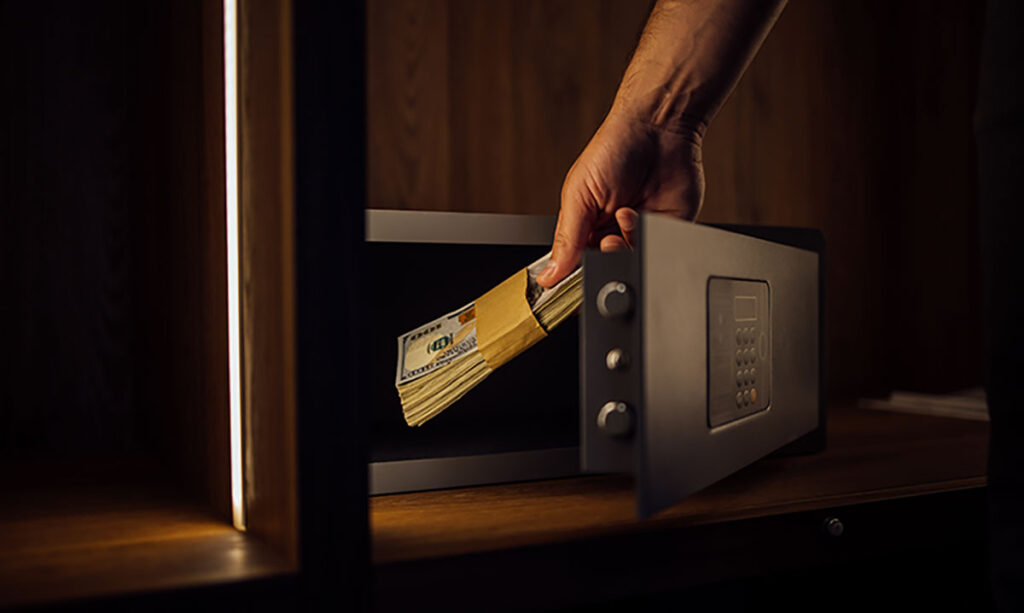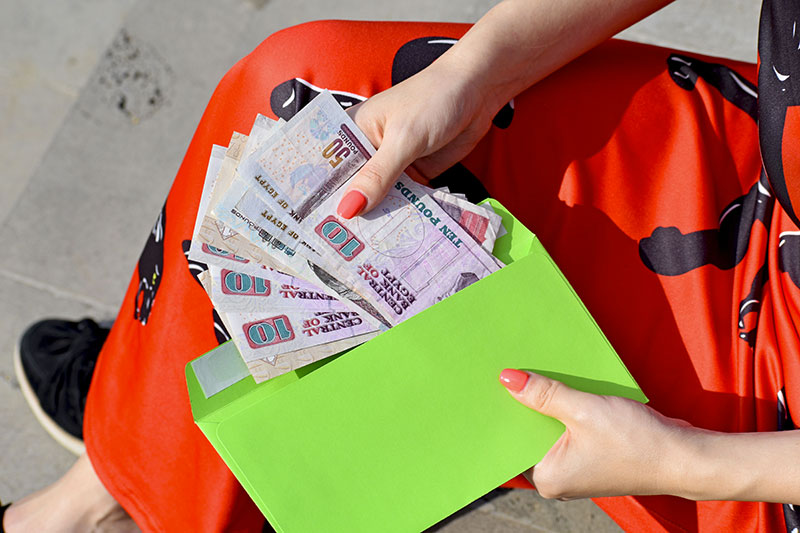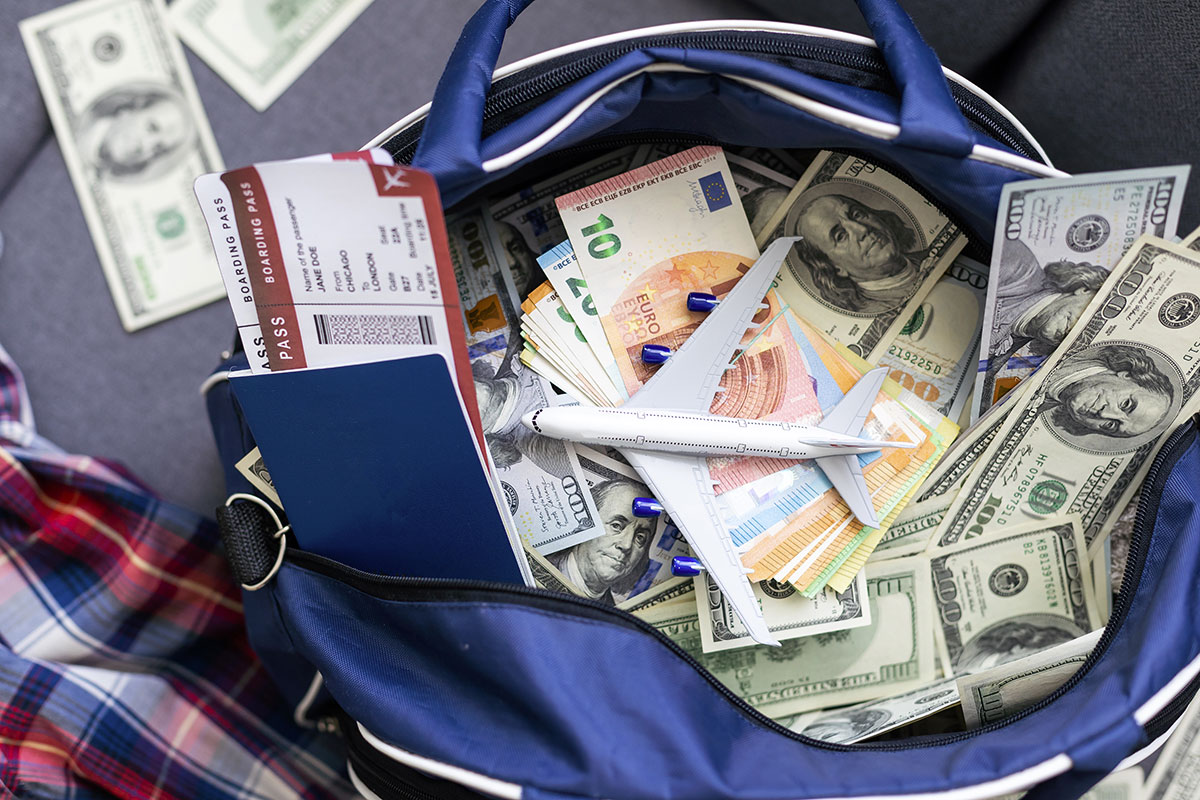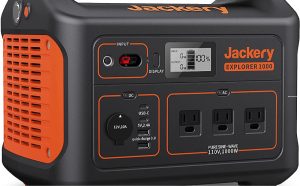2.5K
A few years ago, an expat friend of mine asked if I could transport some cash to her passport country, to which I was traveling. I agreed, not thinking much of it. Since we were both incredibly underpaid English teachers at that time, I expected that she would be sending only a few hundred dollars back with me. What she gave me was several thousand dollars, all in cash. I was paranoid during the trip, carrying the cash in my pocket to prevent it from being stolen. I was so nervous that I found it difficult to sleep on the long flight. I wasn’t robbed, but I wish I knew then what I know now.
Knowing how to travel with cash – safely – is something that takes a bit of research, critical thinking, and experience. Here are some hacks and advice, based on what I have learned, for keeping your money secure while traveling.
5 Reasons to Travel with Large Amounts of Cash
Many folks suggest that the safest way to travel with a lot of cash…is to use a credit card. But that is not really traveling with cash at all. Still, there is security in traveling with a credit card since a stolen credit card can be canceled immediately, and you’re not responsible for any charges a criminal makes. However, despite the existence of credit cards, there are several reasons why you still should travel with cash.
1. You Need Cash to Get Home
“Always travel with enough cash to get you back home” is a standard, and time-tested rule of thumb for travelers. When you’re traveling, you are away from the safety and supplies of your home. Should a crisis occur, you are far better off returning to your home than trying to eke out an existence wherever you happen to be when a crisis hits. If you’re entirely single and have no attachments or commitments, returning home is less important, but if you have a family at home and you’re away, you need enough cash to get yourself back to support the ones who need you.
2. Credit Cards May Not Work
I don’t mean that credit and debit cards may not work in an end-of-the-world scenario, though that’s certainly to be the case should such a situation arise. Rather, I mean that even in ordinary circumstances, credit and debit cards may not work when you travel to another country. I am writing from a country where they don’t work. A few months ago I traveled to a country where my credit cards worked, but my debit cards didn’t. In previous years, I’ve been in places where neither worked. Having cash with you always offers a backup option.
3. Cash is Private
You may not want to leave a digital record of your presence in a country or of a purchase you made. Tourists use VPNs while traveling for this reason. Cash is also private. Some travelers use cash to avoid digital traces, others may use it for illegal activities (which I do not encourage), but even regular travelers might prefer cash to ensure their spouses don’t discover purchases like a surprise gift. Cash gives you the option of protecting your privacy.
4. Cash Can be Used to Transfer Funds
If you’re traveling between locations, and especially between countries, transporting cash may be the best way to transfer assets or value between those locations. In the case of my friend who asked me to transport cash, she had no other method of moving the money from her host country to her home country except through cash.
5. Cash Offers Opportunities
People psychologically value cash more than digital transactions, which means that cash can be a powerful bargaining tool and a means to secure good deals. Show a wad of cash to someone and they’ll be more likely to take it than if holding a credit card. Credit cards, for merchants, comes with fees, often up to 4%. So, a $100 sale via a credit card is more like $96 for the merchant. Many places, especially tourist spots, often offer different pricing for cash and credit, reflecting this cost difference. Cash will bring you opportunities that a credit card doesn’t.
How to Travel with Cash While in Transit
Whether for one of those reasons above, or some other reason, you’ve concluded that you need to transport a lot of cash with you as you travel. The immediate question is, how can you keep it safe against theft? Cash is particularly vulnerable when you are away from your home and usual patterns of protection. If you’re traveling, especially internationally, you may not be able to travel with your normal self-defense tools and you may not be aware of what local areas are dangerous. You face higher risks when traveling.
Further, once cash is lost, it really can’t be recovered. You can reverse a credit card charge that is fraudulent, but it’s unlikely that you’ll recover cash that is stolen. How can you stay safe from pickpockets, theft, and even muggings while traveling? Thankfully, there are a lot of great solutions to this problem, and I’m happy to share them with you.
If you’re traveling with lots of cash, the most important thing you can do is to not draw attention to that fact. You want to appear completely normal, like all of the other plane to train passengers who don’t have thousands of dollars of cash on them.
Minimize Suspicious Behavior
The first and most important way to travel safely is to not draw attention to yourself. If you’re wearing unusual clothing, expensive-looking jewelry, checking a map, visibly nervous, and keep checking your pockets where there’s a noticeable cash-sized bulge, or pulling out a large wad of cash to pay for your food, then you’re drawing attention to yourself and your money. Avoid suspicious behavior.
Remember, if you’re traveling far from home, behaviors considered “suspicious” may differ from those in your hometown. This is true not only when you travel internationally, but also if you’re a long physical difference from what you’re used to. When I lived near Seattle, I could spot a tourist a mile away because they often carried umbrellas, whereas locals typically wore only jackets and didn’t use umbrellas. Try to fit in with whatever local appearance and actions are.
Keep Cash Close
Second, if you’re traveling with lots of cash, or with anything valuable, don’t let it out of your sight or off of your body. That means no luggage, no handbag left on a chair, and not even a backpack on your back. Criminals thrive on stealing when you’re not paying attention, or quickly diverting your attention so that they can nab your valuables. Something you can’t see can be stolen whenever a criminal wishes, and even something that you can see will be stolen in a second by a thief that diverts your attention.
Wear Hidden Wallets
How do you do that? Through the wonderful world of concealment clothing. There are an immense number of creative options for protecting your valuables, too many to address here, but below are some of the most important and useful options for carrying your cash or other valuables while traveling:
- Money Belts – Some money belts are a wallet that attaches to your belt and hangs inside your pants, others go around your waist inside your pants, others are a belt with a zipper so that the belt itself can hide cash, and there’s even high-waist belt options for women that contain secret pockets in which you can store a lot of cash. All are great options. I personally own a zippered belt like this.
- Neck Wallets – A neck wallet is designed to hang from your neck and be worn under your shirt. It’s unobtrusive, hidden, and can hold quite a lot of money. This is what I use for my passport and primary cash stash.
Sale
HERO Neck Wallet – RFID Blocking Passport Holder – Easy to Conceal Travel Pouch
- LIFETIME REPLACEMENT GUARANTEE – We individually test every HERO Neck Wallet in the USA before shipping. And every order comes backed by our lifetime replacement guarantee. If anything ever goes wrong we will send you a replacement absolutely free!
- HANDS-FREE TRAVEL POUCH – Our ultimate universal travel neck wallet conceals passports, IDs, credit cards, cash, iPhones (incl. 15 Pro Max without a bulky case), tickets, and valuables, keeping personal items hidden discreetly on the go.
- Underwear Wallets – I expect that most pickpockets and even muggers would not ask you to remove your underwear to check for valuables, making underwear wallets one of the safest places to stash cash. Underwear wallets typically have a sewn-in pocket where you can stash cash. While it can’t hold wads of cash, it can hold more than you might think.
- Bra Wallets – Women have another hiding place with a bra wallet. Some bra wallets feature a hidden pocket in the bra itself, but you’ll be able to carry far more through the bra wallet that clips to the bra and hangs below it.
- Shoe Wallets – A shoe wallet is a tiny sleeve for hiding cash inside your shoe. Although its capacity is limited by the size of the shoe and the need for comfort while walking, it remains an unlikely spot for a smash-and-grab thief to check.
- Sock Wallets – Similar to an underwear wallet, these are socks which contain a hidden pocket into which you can put cash. It won’t hold as much as a money belt or bra wallet, but it is an unobtrusive place to hide something.
- Ankle Wallets – A wallet that, as you’d expect, goes around your ankle and is hidden underneath your pants. It’s not so useful if you wear shorts, but it provides another place to store cash safely.
Hidden Ankle Wallet – Concealed Carry Anti Theft Travel Pouch to Protect Cash, Credit Cards, and Passport – Fits Insulin and EpiPen – Machine Washable -Designed for Running (Medium)
- Unique design for comfort – Forget bulky waist wallets, shoulder bags, or neck wallets. Our ankle wallet frees you from pinching elastic straps, heavy metal clasps, clumsy zippers, and awkward snaps. Enjoy the freedom to move without worrying about your valuables slipping out—functions like a compression sock.
- Two Pickpocket-proof pouches – Keep your valuables safe and secure without needing a bulky wallet. With two pickpocket-proof pouches, you can protect your cash, passport, and other items from thieves while on the move. Keep your valuables secured under your pants, slacks, or Levi’s.
- Wrist Wallet – If you’re wearing a long-sleeve shirt or dress, then a wrist wallet can be a good option. Secure around your wrist, it enables you to keep your valuables hidden and yet be easily accessible. It’s less useful than others, though, because you can’t wear short sleeves without exposing it.
Honoson 5 Pcs Wrist Wallet for Women Men, Zipper Wrist Pouch Running Wallet Wristband Sweatband Wrist Wallet for Keys ID Cards Cash Napkin for Running Walking Hiking Jogging Travel(Dark Colors)
- 2 Pockets design: designed with 2 pockets, 1 zipper pocket, and 1 folding pocket, the wristband is convenient for you to hold keys, wedding rings, credit cards or cash, also suitable for cellphone which is not larger than 4.7 inches
- Size information: each running wallet is about 12 x 10 cm/ 4.7 x 3.9 inches, easy for you to store and carry, hard to slip or fall off, so you will not have the trouble of constant adjustment during exercise
This should get your brain thinking of how to travel with cash without drawing attention to that cash. If you don’t like any of these options, use these ideas to come up with your own idea! Remember that with a tiny effort, you can sew extra pockets on the inside of whatever pants or shirt you like!
Tips on Buying Concealment Clothes
Secret pocket clothing like shorts, skirts, vests, scrunchies, or scarfs are all options for hiding cash in places that most criminals won’t look or expect. Just make sure, if it’s detachable from your body like a scrunchie, scarf, or vest, that you wear it in such a way that it can’t come off or be forgotten somewhere.
There are too many options and too many variables for me to give you specific advice on what concealment clothing you, specifically, should buy. However, as you explore the options I linked to above and others, here’s a few things to keep in mind:
1. Buy Big
In general, try to buy clothing that holds more, rather than the options that hold less. You may not always need the extra capacity, but it’s nice to have it as an option. If all you buy is a wallet sock, it will be difficult to carry much cash and impossible to carry your passport hidden. If you travel internationally, remember that other countries’ currencies will be of a different size than your home country, so buying bigger gives you more flexibility than buying something that just barely fits your own country’s currency.
Keep in mind that your concealment clothing may also need to carry valuables for other family members, so buying large gives you more options than buying small. This is why I’m a big fan of the money belt, bra wallet, and neck wallets. Surprisingly, I’ve also heard that the wallet scarfs can also carry a lot inside them, though, being a man, I’ve never used them.
2. Buy Versatile
It’s best to buy concealment clothing that can work in any climate. A sock wallet won’t work if you wear sandals, a wrist wallet doesn’t work if you’re wearing short sleeves, and an ankle wallet won’t work if you wear shorts. On the other hand, an underwear or bra wallet will probably work anywhere in the world.
Similarly, buy things that work for when you arrive and not just for when you’re traveling. Your risk isn’t just in airpots and train stations, but on the streets. Make sure whatever you buy can also be used where you’re going.
3. Buy Boring
Remember that, wherever you go, you want to fit in. The last thing you want is for your wallet socks to be a bright color that draws attention, or your wallet scarf to make you stand out from the crowd. I know it’s bland, but buying boring colors that won’t draw attention is far superior to buying something that looks nice but may draw more attention than you want.
Likewise, buy things that can stay hidden. If you’re obviously wearing a neck wallet that can be seen under your shirt, it still is harder to steal than a normal wallet, but it defeats part of the point. Worse, it might draw more attention to you because people think you have something of great enough value that you want it to stay hidden.
4. Buy Multiple
Who said you need just one article of concealment clothing? Buy multiple items for redundancy’s sake and spread out your cash. If one wallet is stolen or compromised, it will leave others available so that you still have options. This also helps avoid a situation where you have a suspicious bulge under your shirt because you put all your cash in a bra or neck wallet.
As you think of buying multiple, think of how they may complement each other. For example, if you’re haggling on the street and need extra cash, you can get it out of a wrist wallet quite easily, while it’s difficult to get it out of a bra wallet. On the other hand, a bra wallet can hold a ton more cash than a wrist wallet. So, consider buying both so that you have both a place to store a large amount of reserve cash and a place to carry a smaller amount of convenient cash.
5. Buy Attached
If you search for things with hidden pockets, you’ll find items like hats or water bottles. While these can make fantastic places to keep cash hidden, sometimes a lot of it, I don’t recommend these items because they’re too easy to lose. You probably won’t face much risk of theft—I doubt a criminal will steal your water bottle thinking it contains cash—but you face an immense risk of setting it down and forgetting it. Whatever you buy, make sure you can attach it to your body so that you don’t forget it.
How to Keep Cash Safe in a Hotel
Your risk doesn’t end once you get at your destination, though. Your cash needs to remain safe when you’re out and about, as well as at your hotel room. The good news is that what kept your cash safe while you were en route will also keep your cash safe while you’re at your destination: avoid suspicious behavior and keep the money on your person via concealment clothing.
What about the hotel room, though? You likely don’t want to walk around with all of your valuables with you, and your hotel room is likely safer than the street. Still, hotel rooms are often robbed and hotel staff are rarely people who earn high wages, so leaving cash in the hotel presents a risk as well. How do you do this safely?
Is the Hotel Safe Safe?

The first many have is to use the hotel safe. If your hotel provides you a safe—not all do—this is certainly an option. The benefit of this is that the safes are usually well-secured inside the room and are designed to keep the contents safe from thieves.
The problem is that, guests so consistently lock belongings in safes, that hotels usually have a means of opening them—a master key, a master code, a factory reset, etc. Cleaning staff and thieves likely know these methods—they’re not hard to find out—and so your valuables aren’t actually that secure in the hotel safe. Further, the hotel safe is the first place that a criminal will look, making it a prime target.
In light of these concerns, I don’t recommend putting most of your cash in a hotel safe. However, it can be good to put some cash there. If a thief breaks into your hotel room and gets cash out of the safe, he’s unlikely to go rooting through the rest of your luggage to find more. The thief will likely grab what he can, and run. If you’re clearly not using the safe, then the criminal is more likely to rummage through your luggage to try to find something of value. A bit of cash in the hotel safe provides a nice diversion “insurance” policy for the rest of your cash.
Use a Diversion Safe
What do you do with the rest of your cash, then, if you don’t put it in the hotel safe? You hide it in plain sight in a “diversion safe.” This is an innocuous, everyday item that you put your cash inside. As I wrote in Cash in a Flash: Fluid Finances for Expat Emergencies:
My great-grandfather bundled up a load of cash in freezer paper, wrote “Steak” on the outside, and put it in his freezer alongside the rest of his frozen meats. No criminal is going to unwrap frozen meat in the odd chance that it contains cash.
So, what can you use as a diversion safe in which to hide your money? Your creativity is the limit, but here are some diversion safes that you can buy or look at to get your creative juices flowing:
Diversion Safe Ideas
- Book Safe – A “book” that is actually hollow. Book safes have the advantage of containing a lot of space, but it’s a fairly common trick that even appears in movies, so its likely a criminal may suspect this.
- Hairbrush Safe – It’s not a ton of room, but you can fit a lot of rolled-up cash inside the handle of a hairbrush. And why would anyone steal one of those?
- Sunscreen Bottle Safe – Tourists always have sunscreen, so this would blend in quite easily. This is also a larger option.
- Can of Coke Safe – Throw one of these in your mini fridge and no one will take a second look, even though they can hold hundreds of dollars. If you do this, though, try to get a brand, like Coke, that is widely known around the world. If you get something less popular, like Dr. Pepper, it may stand out if the place you’re going doesn’t actually have Dr. Pepper.
- Tons of Other Options – This is a fun rabbit hole to lose yourself down. There’s a lot of creativity out there.
Tips When Using Diversion Safes
Here’s a couple tips to help you use a diversion safe well:
1. Diversify
Even if you use a diversion safe, diversifying is wise to ensure not everything is lost if a criminal discovers it. Most thieves in a hotel are of the “cat burglar” variety, where they’ll grab the first thing of value that they see, and run. Diversifying your hiding places protects you.
2. Avoid Trash Appearances
Be creative about your diversion safes, but make sure that they don’t appear to be trash that cleaning staff might throw away. This happened to me once, and it was quite unfortunate. One of the most creative diversion safes I’ve ever seen was money placed inside a diaper so that it looked like a dirty diaper. No criminal will touch that, making it safe from theft, but the maid may toss it and you lose the money anyway. Be creative, but make sure the diversion safe doesn’t look like trash.
3. Don’t Forget Them
Set a reminder or tell a traveling companion where you’re putting your money. The last thing you want is for the money to be so well-hidden that you forget about it when you’re leaving.
Cautions When Traveling with Cash

Following the suggestions above, you’ll be able to reduce your risk when you’re traveling, even with large amounts of cash. However, thieves and hotel staff aren’t the only risks you’ll face when traveling internationally with large amounts of cash: government officials are another.
Beware of Customs
Every country has specific rules for how much cash you can take into, or out of, the country—usually they also have rules for “cash equivalents” like traveler’s checks or precious metals. Ensure that you know and adhere to these rules, as customs officials are typically stringent and often have the authority to seize money exceeding these limits.
Keep careful track of how much money you are carrying, including the amount in your normal wallet, and ensure that the total does not exceed the legal limit. One of the problem people often face is that, when the rule is $5,000, they’ll carry $5,000, but forget about the $5 that they have in their wallet. That additional $5 puts your total amount over the limit, which can create trouble for you.
Make sure the total you have is allowed both for exit from the country you’ll leave as well as entry into every country you’ll enter.
Be Ready to Explain Your Cash
If you go through customs with an obviously large amount of cash, you may be questioned about it. Ensure you have a solid, clear, and legitimate reason for possessing the cash. Consider bringing proof of ATM receipts, proof of employment, or other document which would prove the legal provenance of the funds.
Further, make sure you can explain why you’re bringing it into the country. Buying souvenirs is a legitimate reason to bring cash into a country, but it’s not a reason to bring $10,000 into a country unless you’re buying something really expensive. Make sure your answer corresponds with the amount of money you have. Emergency funds is a legitimate reason to bring cash into a country. Just answer confidently and clearly; if you hem and haw and look nervous, don’t be surprised if the customs agent asks further questions. Be confident and clear.
Be Ready to Explain Why It’s Hidden
Likewise, you need to be able to explain not only the cash, but also the way that you have hidden it. Customs agents all know there’s a risk of theft if you’re traveling and so they’re used to concealment clothing. However, if you are overly clever or unusual in hiding your money, you may appear more like a smuggler than a prepared traveler. Walk that line carefully. The most important thing is fully disclosure and a confident, clear, legal reason why you’re traveling with hidden cash.
Conclusion
When my friend handed my thousands of dollars of cash all those years ago, my paranoia was because I didn’t know of, let alone use, any of the methods outlined above to keep her cash safe. Today, I know better and travel with even more cash without any fear of theft. By avoiding suspicious behavior, wearing concealment clothing, utilizing diversion safes, and following all immigration rules, I’m able to confidently travel with enough cash that I know, even in an emergency, I could make it home to be with my family. That peace of mind, and knowing I could care for my family even in an extreme situation, is worth the effort.
Appreciate this article? Then subscribe to The Prepared Expat to receive free resources that equip you to survive and thrive as an expat. When you do, I’ll also send you a chapter of my book, completely free with no strings attached.
About the Author
Mark founded The Prepared Expat after watching himself and other expats struggle with practical aspects of daily expat life: legalities, finances, language learning, raising children, etc. The Prepared Expat provides a wealth of free resources to help you survive and thrive as an expat, covering topics like cross-cultural living, language learning, self-defense, expat finances, health, safety, and much more!




















